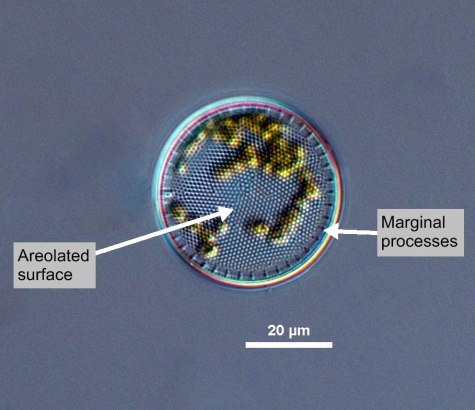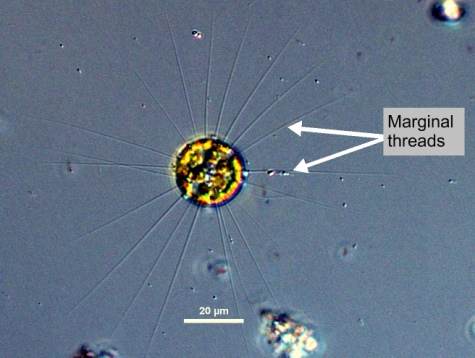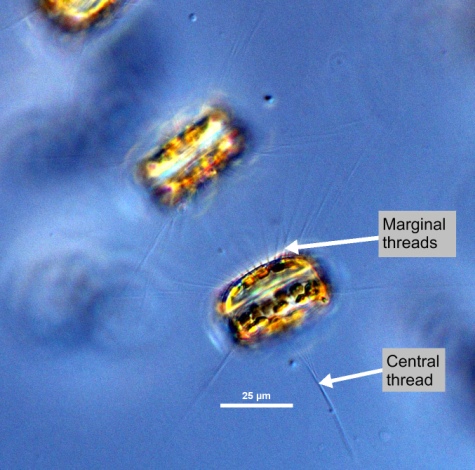





|
 |
Synonym(s)
Classification
(Guiry and Guiry 2012)
Lifestyle
Description
Margin
The outline or border that defines the shape of an organism or cell.
margins. Adjacent cells are connected in chains by a single and thin central thread. Corners of cells are often bevelled, and the CloseValve
In diatoms, the structurally distinct halves of the cell wall (Becker 1996).
valve centre is usually concave (Cupp 1943).Measurements
(Hasle and Syvertsen 1997)
Similar species
Harmful effects
Habitat
Distribution
Cosmopolitan, except in polar regions (Hasle and Syvertsen 1997).
Sometimes contributes to spring and fall blooms.
See above.
Growth conditions
Environmental Ranges
Temperature range (°C): -1.948 - 24.625
Nitrate (μmol L-1): 0.335 - 28.983
Salinity: 18.564 - 35.801
Oxygen (mL L-1): 4.838 - 9.192
Phosphate (μmol L-1): 0.048 - 1.909
Close
Silicic acid
A general term to describe chemical compounds containing silicon, oxygen and hydrogen with a general formula of [SiOx(OH)4-2x]n. Diatoms polymerize silicic acid into biogenic silica to form their frustules (Azam and Chisholm 1976).
Silicate (μmol L-1): 0.754 - 43.816(OBIS 2012, cited in EOL 2012)
Bloom characteristics
References
Cupp, E. E. 1943. Marine Plankton Diatoms of the West Coast of North America. University of California Press. Berkeley, California. 238.
Encyclopedia of Life (EOL). 2012. Thalassiosira. http://eol.org/pages/12082/overview. Accessed 17 Mar 2012.
Guiry, M. D. and Guiry, G. M. 2012. Thalassiosira Cleve, 1873: 6. http://www.algaebase.org/search/genus/detail/?genus_id=43768. Accessed 26 Feb 2012.
Hasle, G. R. and Syvertsen, E. E. 1997. Marine diatoms. In: Tomas, C. R. (ed.) Identifying Marine Phytoplankton. Academic Press, Inc., San Diego. 5-385.
Ocean Biogeographic Information System (OBIS). 2012. Thalassiosira. http://www.iobis.org/mapper/?taxon_id=518563. Accessed 17 Mar 2012.
Wichard, T., Poulet, S. A., Halsband-Lenk, C., Albaina, A., Harris, R., Liu, D. and Pohnert, G. 2005. Survey of the chemical defence potential of diatoms: Screening of fifty one species for α, β, γ, δ-unsaturated aldehydes. Journal of Chemical Ecology. 31(4): 949-958.
